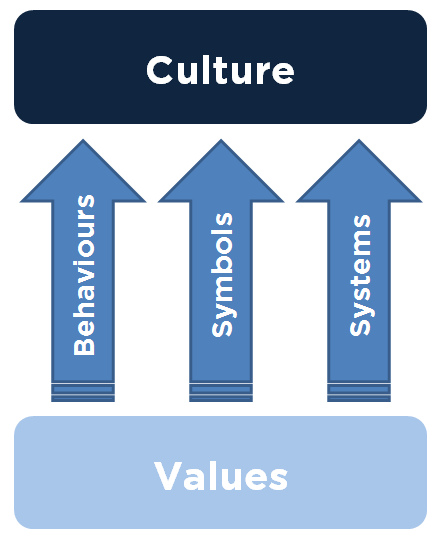Is there a difference between organisational culture and organisational climate?
And does it matter?
In recent years I have pondered these questions as a result of some client discussions and related pieces of work. In general conversation I often find these terms used interchangeably and/or spoken about in conjunction with such things as high performing teams, improving staff/culture survey results, working on values and behaviours etc. As I have worked with clients on these issues, I have sought to provide some clarity about these concepts, usually just through exploration and conversation with them.
It seems timely to attempt the discipline of putting some order around my thoughts and put my thinking into words! What I have written below is more food for thought, rather than a definitive answer, but hopefully is a helpful frame of reference when exploring these concepts. I’ve also contemplated this issue from a pragmatic practitioner perspective rather than taking an academic or intellectual view. So here goes…
Definitions
Organisational culture is often described as the way we do things around here – the behaviours and actions that are valued, whereas organisational climate might refer more to the mood of the organisation – is it a healthy work environment where people can bring their best selves? Is that sufficient a distinction, though? There might be a reasonable argument to suggest those two things are still pretty similar. So let me take it is few steps further by suggesting a couple of other possible distinguishing features.
I believe that organisational culture is very much a strategic question:
What is the culture that we need that will support our strategic direction?
Rather than the idea of having a good/bad culture, it is more about the idea of having the right (strategically aligned) culture – the culture we need to support our strategy.
Organisational climate, however, is more about organisational health which is more universal in nature – a good (healthy) climate versus a bad (unhealthy) climate:
Is it a workplace where people can thrive and perform at their best?
Organisational Culture
So, when we talk about organisational culture, there are critical choices to be made. One of the most important things to do is describe the type of culture we need to support our strategic directions. Typical cultures might be described in terms of one or a combination of the following themes – achievement oriented, customer-focused, collaborative, innovative, people-first or socially responsible¹. Organisational values are then articulated that embody the desired culture.
To create the desired organisational culture the organisation then needs to actively plan and manage the messages received by the organisation through:

- Behaviours – the behaviours and actions that are demonstrated and rewarded in the organisation
- Symbols – the decisions and artefacts that people notice e.g. office layout, titles, meeting agendas, priorities, resource allocation, etc
- Systems – the mechanisms for managing people and tasks e.g. planning processes, organisational structures, performance management, etc¹
It is not unusual to see organisations inadvertently communicating messages that are inconsistent with their desired culture e.g. an organisation that preaches collaboration but measures and rewards individual performance, maintaining pidgeon holes and in-trays while requiring people use sophisticated electronic document management systems, professing innovation while requiring monthly reporting on output targets etc. No doubt, many of you will be smiling to yourself and you recognise these types of inconsistencies. Culture management requires a planned and consistent approach.
Click
here to see the remainder of this post...